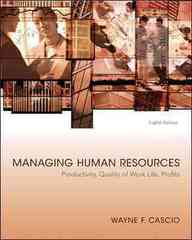2. Use the four-part framework presented earlier (namely, is this the only way, do I have the...
Question:
2. Use the four-part framework presented earlier (namely, is this the only way, do I have the goods, why am I doing this, am I ready?) to analyze Mr. Stone’s actions.
What additional information do you need to answer the four questions?
Employees who find themselves in the dicey position of witnessing a breach of ethics, a crime, or a health or safety threat in the workplace need to proceed very cautiously.
A wrong step can leave an employee without a job and with few options. Furthermore, it can ruin his or her reputation and make subsequent employment extremely difficult to obtain. Under Sarbanes-Oxley, OSHA cannot consider any claim filed more than 90 days after an alleged retaliation, and it may exclude any alleged harassment that occurred before Sarbanes-Oxley was enacted in mid-2002.
That policy evidently tripped up F. Barron Stone, a financial analyst at Duke Energy Corporation who complained about Duke’s accounting to a company hotline and to South Carolina regulators. Stone said Duke was underreporting profits so that regulators wouldn’t cut the utility’s electricity rates. A subsequent audit by North and South Carolina found $124 million of underreporting, and Duke paid $25 million to settle the complaint.
A few months after Stone’s hotline calls, Duke eliminated his job in a reorganization and gave him an undefined role outside of financial planning. He says he lost his office and his access to Duke financial data, and he began to get poor performance reviews.
When he applied in August 2002 for a position similar to the one he’d lost, he said he didn’t get an interview. Stone filed a complaint with OSHA two months later.
Step by Step Answer:






